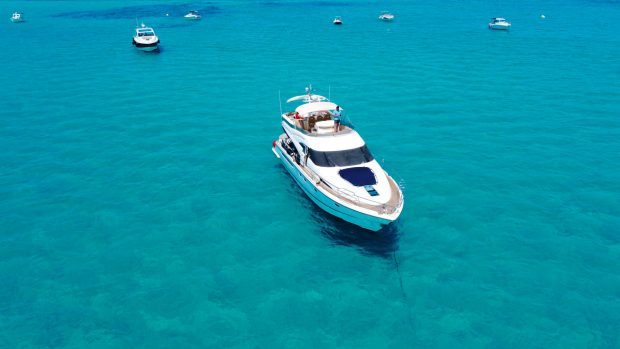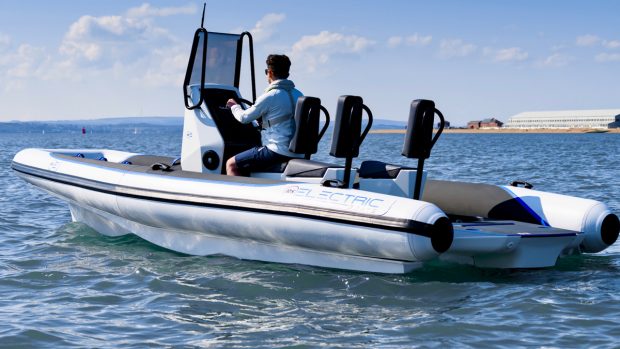Can this pair of spinning cylinders from RotorSwing really stop a Linssen Grand Sturdy 52.9 from rolling? Dave Marsh travels to Germany find out
When it comes to stabilisers, we’ve witnessed a whole Industrial Revolution’s worth of development in the space of a few short years.
Gyros have got smaller, faster and cheaper, and what used to be simple fins now come in multiple mix-and-match forms: straight or curved, electric or hydraulic, conventional or zero-speed, and there’s even the DMS AntiRoll fins that flap like a pair of wings.
With the typical cruising boat becoming ever more corpulent and fixed hardtops adding yet more weight up top, these developments could not have come at a better time.
It’s one thing to report on these developments, better still to test drive the stabilisers. We’ve tried most of them over the years but this is the first time we’ve tested the most unusual stabilisers of all – the RotorSwing.
Our test bed was a Linssen Grand Sturdy 52.9, which we motored for about an hour in relatively open water near Emden in Germany and then subsequently up a surprisingly blustery river Ems for a couple of hours, on the way to the Linssen dealership.
The surprisingly simple system comprises a pair of rotating cylinders, driven by high-speed electric motors, which swing out at right angles to the hull when in use.
These cylinders develop their lift courtesy of the Magnus effect (pictured below). When a cylinder spins as it moves through a liquid medium, it develops high pressure on one side (where the cylinder’s surface is pushing against the flow of the water, due to friction) and low pressure on the other side (where the cylinder is pushing it in the same direction).
 The effect is exactly the same that you see when Novak Djokovic hits a powerful forehand shot with topspin – that spinning produces the Magnus effect as it moves through the air and enables the ball to dip inside the base line rather than fly out the back of the court.
The effect is exactly the same that you see when Novak Djokovic hits a powerful forehand shot with topspin – that spinning produces the Magnus effect as it moves through the air and enables the ball to dip inside the base line rather than fly out the back of the court.
With their spindly forms protruding at right angles from the hull, I couldn’t help feeling how vulnerable they looked, possibly at odds with the notion of travelling up a river at close quarters with other craft.
However, during our trip along the river, Jan Linssen and Linssen’s sales manager Ed Houben, explained why they are so popular on Linssens and other boats used in a similar environment.
In fact, they don’t protrude far at all, about a metre from the exit point on the hull well below the waterline, and obviously much less from the far bemier ship’s sides, certainly less distance than you would ever hope to pass oncoming traffic.
Regardless of their protrusion, their killer feature is that when required they fold in to sit snugly along the hull reducing both the width and drag.
This is a big plus on the inland waterways, where Houben explained that the banks are sometimes so shallow and shelving that even a small conventional fin would be at risk of grounding when a boat tries to tie up alongside.
That retraction can be manually triggered or there’s an auto-park function that will swing the fins in as soon as neutral or reverse gear is engaged, or when the speed drops below 3 knots.
Operation was simplicity itself, an ultra-simple control with drive and park buttons – the motion sensor and control cabinet takes care of everything else.
Our big Linssen has a slightly different hull form to its predecessors, and was better than I had anticipated at remaining steady all of its own accord.
However, the difference between RotorSwing on and RotorSwing off was marked. It was as if the water we were passing through had been removed from the scene, and we were gliding along a railway line.
That railway track became a lot bumpier when we headed up the blustery river, so we did experience up and down movement of the bow, but the transverse stability remained rock solid.
The system also compensated perfectly for driver induced roll such as flinging the boat into full lock turns at the 52.9’s albeit modest top speed of 10 knots.
Sadly, we didn’t experience truly challenging conditions for a stabiliser. However, if you have any doubt how much force the system is able to exert, check out the video below:
Houben and Linssen also explained the system’s practical appeal. Like a Gyro, RotorSwing isn’t too fussy where it is installed, and is most effective between 3 and 14 knots, very much Gyro territory.
However, RotorSwing’s electric motors are far more compact than a Gyro, so installation is exceptionally easy.
RotorSwing is not going to render other stabiliser systems obsolete. Mounting drag means they can’t be deployed above 14 knots and the standard RotorSwing does not work at anchor like most fins and gryos now do. And although they fold in they will still generate the drag that gyros do not.
In truth, no one system has all the answers, but RotorSwing clearly has a few unique solutions it can call its own.










